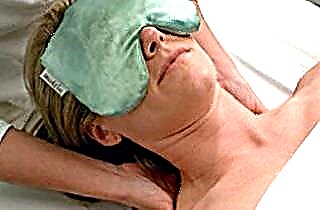Euphyllin is an antispasmodic related to xanthines. We are widely used in many branches of medicine, especially in cardiology and pulmonology. It was opened in the 80s of the 19th century. Natural sources of this substance: tea leaves, coffee beans, cocoa beans husks. The international name is aminophylline. There is a prescription drug.
Mechanism of action and physicochemical properties of aminophylline
The active ingredient in aminophylline is aminophylline, the molecular composition of which includes theophylline (80%) and 1,2-ethylenediamine (20%).
Physicochemical characteristics:
- whitish or yellowish powder;
- weak ammonia smell;
- dissolves in water.
Description of the spectrum of effects and mechanism of action:
- blocks receptors for adenosine and inhibits the action of phosphodiesterase, which contributes to the accumulation of cyclic adenosine monophosphate;
- reduces the influx of calcium ions to cell membranes, thereby reducing the contraction of smooth muscles;
- the effect is mainly due to theophylline;
- relieves bronchospasm (bronchodilator effect);
- improves blood circulation in the kidneys;
- weak diuretic effect;
- slows down the adhesion of platelets;
- improves the work of the diaphragm;
- stimulates the respiratory center, which in turn improves gas exchange and reduces the frequency of apnea;
- normalizes breathing, and this increases blood oxygen saturation and reduces the level of carbon dioxide in it;
- stimulates the work of the heart, increasing the frequency of contractions and their strength, and also improves coronary blood flow;
- relaxes blood vessels;
- relieves spasm from peripheral and pulmonary veins, which helps to reduce pressure in the "small" circle of blood circulation.
- relieves spasm from the biliary tract;
- thins the blood;
- reduces the tone of the uterus;
- raises the acidity of stomach juice.
Indications for the use of aminophylline
Indications for oral administration
Euphyllin tablets are used in such cases:
- chronic obstructive pulmonary disease;
- emphysema;
- asthma;
- sleep apnea at night;
- increased pressure in the pulmonary artery;
- Pulmonary heart.
Indications for parenteral administration
Intravenous aminophylline is used for such diseases:
circulatory disorders due to cerebral ischemia;
- chronic obstructive pulmonary disease during an exacerbation;
- edema of renal origin;
- bronchial and cardiac asthma;
- increased pressure in the pulmonary circulation;
- failure of the left ventricle with bronchospasm (breathing is impaired by the Cheyne-Stokes type).
Special instructions
For the period of therapy, it is necessary to limit the use of alcohol, as well as foods and drinks that contain caffeine. It is necessary to refrain from driving a car and from performing work that requires attentiveness and precision of movement. Pregnant women should consider how strong the need for medication is, as there is a risk of harm to the fetus. During lactation, it is forbidden to use the drug, or not to breastfeed during the treatment of the baby.
Contraindications and features of use
Contraindications to the drug:
- pulmonary edema;
- very high or low blood pressure;
- hemorrhagic stroke;
- arrhythmia against the background of a frequent heartbeat;
- chronic heart failure during the period of decompensation;
- epilepsy;
- allergy to this medicine;
- ulcers of the stomach and duodenum;
- hyperacid gastritis;
- hemorrhagic stroke;
child under 3 years old;
- hemorrhage in the retina.
You should also be careful in such cases:
- acute period of myocardial infarction;
- angina pectoris;
- widespread atherosclerosis;
- cardiomyopathy;
- extrasystoles;
- renal, liver failure;
- an ulcer in any part of the digestive tract;
- recent internal bleeding;
- thyrotoxicosis or hypothyroidism that does not respond to treatment;
- gastroesophageal reflux disease;
- heat;
- an enlarged prostate gland;
- aged people;
- taking anticoagulants.
Instructions for the use of aminophylline tablets:
- Release form - 150 mg round tablets.
- Take internally.
- For adults, appoint: 1 tab. 1-3 times a day.
- Children: 7-10 mg / kg per day in four divided doses.
- The course lasts on average several days - months, depending on the disease.
- The highest dose for adults: one time - 0.5 g; per day - 1.5 g. For children: for one dose - 7 mg / kg; per day - 15 mg / kg.
Instructions for the use of aminophylline in ampoules (2.4% - 5ml):
Administered intravenously.
- The dose is determined for each patient.
- If the patient uses aminophylline orally, then the dose for intravenous administration should be reduced.
- The medicine should be administered lying down, monitoring the patient's condition.
- Solution preparation method: the dose of the medication intended for one time is diluted in 10-20 ml of 0.9% NaCl (injecting, jet injection for 5 minutes), and in 100-150 ml of 0.9% NaCl, if a dropper is required, drip 30-50 drops per minute.
- The daily dose for jet administration: for adults - 10 mg / kg (on average 600-800 mg), distributed 3 times. With cachexia 400-500 mg (the first volume is not more than 200-250 mg).
- Children over 14 years of age: 2-3 mg / kg drip. The highest daily dose is 3 mg / kg.
- Therapy generally lasts a few days - two weeks. It all depends on the severity of the disease, sensitivity and tolerance of the drug to patients.
Possible side effects
Observed from the sides of different systems.
Nervous:
- anxiety;
- sleep disorder;
- headache;
dizziness;
- shiver;
- convulsions;
- hallucinations.
Cardiovascular:
- rapid heartbeat;
- ventricular arrhythmias, which can be fatal;
- extrasystole;
- decrease in pressure;
- acute left ventricular failure;
- angina pectoris;
- collapse.
Urogenital:
- increased urine output;
- feeling of obstruction when urinating (in the elderly).
Allergic reactions:
- rash;
- itching;
- Quincke's edema.
Digestive tract:
- diarrhea;
- decreased bowel tone.
Other:
- temperature;
- redness of the skin.
Interaction with other medications
Increases the risk of undesirable effects of hormonal drugs (dexamethasone, cortisol), mineralocorticoids (sodium levels increase).
- There is a likelihood of life-threatening ventricular arrhythmias when combined with medications for general anesthesia.
- Able to prolong the action of beta-blockers and diuretics.
- Increases the toxic effect of drugs that excite the nervous system.
- When taking rifampicin, phenobarbital, phenytoin, isoniazid, carbamazepine, sulfinpyrazone, jazz, it is worth increasing the dose of aminophylline, since the above listed agents contribute to its elimination.
- When combined with macrolides, lincomycin, allopurinol, fluoroquinolones, methotrexate, propafenone, verapamil, the effect of the drug is enhanced, so you should be careful and reduce the dose.
- Do not use with xanthines.
Overdose symptoms and its consequences
An overdose occurs when the saturation of aminophylline in the blood is above 20 mg / kg. More common in older people. Coma - at 40 mg / kg.
The following symptoms are observed:
- Redness of the skin of the face.
Tachycardia.
- Insomnia.
- Motor excitement.
- Anxiety.
- Photophobia.
- Complete lack of appetite.
- Diarrhea.
- Nausea.
- Vomit.
- Pain in the upper abdomen.
- Shiver.
- Rapid breathing.
- Convulsions.
- A sharp drop in pressure.
Consequences:
- Gastrointestinal bleeding.
- Ventricular arrhythmias.
- Decreased oxygen in the blood.
- Metabolic acidosis.
- Increased blood sugar.
- Decreased blood potassium.
- Skeletal muscle destruction.
- Eclipse of consciousness.
- Renal failure
Overdose treatment
The algorithm for assisting with an overdose depends on the severity of the symptoms and includes:
Cancellation of the drug.
- Gastric lavage.
- Reception of sorbents.
- Normalization of pressure.
- Forced diuresis.
- Hemisorption and plasmasorption (a method of purifying the blood from poisons).
- Hemo- and peritoneal dialysis.
- Oxygen.
- Artificial ventilation of the lungs.
- Symptomatic therapy (motilium, cerucal).
- In the event of a seizure attack, the airway must be kept patent; give oxygen; in / in to introduce diazepam at the rate of 0.1-0.3 mg / kg (no more than 10 mg).
To avoid adverse reactions, the saturation of the drug in the blood should be kept no higher than 10-15 mg / kg.
Analogs
Similar drugs-synonyms that can replace aminophylline include: Euphyllin-UBF, Euphilong, Etifillin, Teotard, Teopek, Kombipek, Aminophylline (imported), Aminophyllin-Eskom, Euphyllin injection 24% - 1ml.
Conclusions
Summing up, I would like to say that, despite such a long existence of aminophylline in pharmacology, the demand for it has not diminished. It is a strong drug and is often used to relieve emergency conditions, as it gives a very good result. But in addition to injections, it is also used in tablets, electrophoresis with liquid is carried out (in neurology for osteochondrosis and various diseases of the spine), and inhalation is done using a nebulizer. When taking, you should adhere to the doctor's prescriptions and not independently adjust the dose and duration of the course, since this medication has a number of severe side effects for the body, and this can cause many problems.



